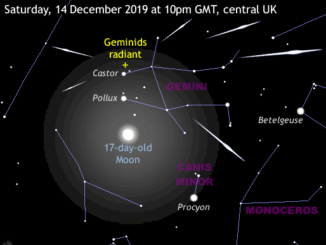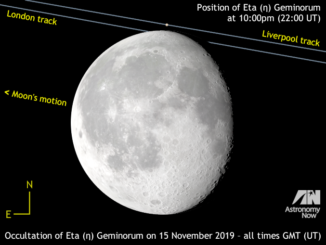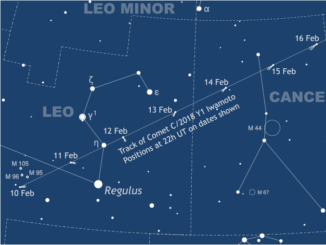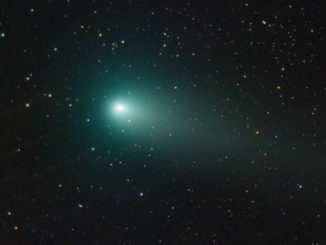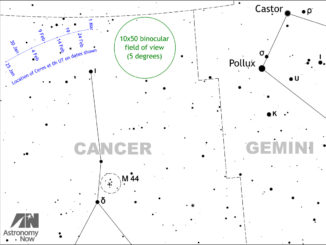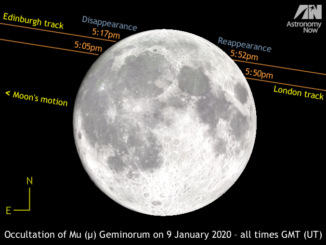
Watch the Moon hide naked-eye star Tejat in Gemini on 9 January
Magnitude +2.9 star Mu (μ) Geminorum, better nown as Tejat in the constellation of Gemini, is occulted (hidden) by the rising 13-day-old waxing gibbous Moon early on the evening of Thursday, 9 January 2020 as seen from the entire British Isles. This is a spectacle for small telescopes and large binoculars, the first bright lunar occultation of a busy year for such events.

